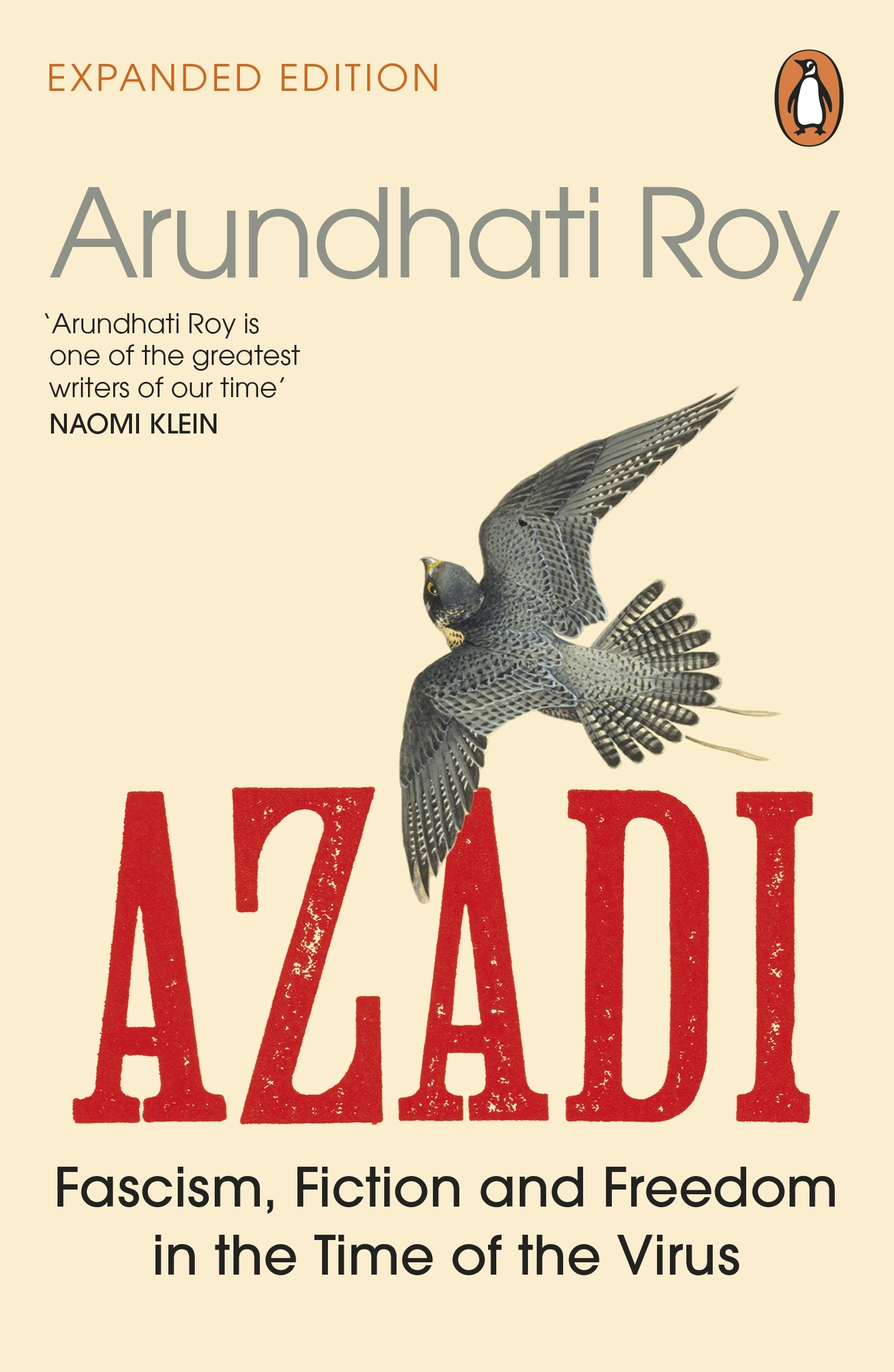
- Published: 3 September 2020
- ISBN: 9780241470039
- Imprint: Penguin eBooks
- Format: EBook
- Pages: 256
A Pessimistic yet Romantic longing for freedom
by Bilal Ahmad Tantray 11 October 2020
Internationally recognised, domestically controversial and self-proclaimed seditious author, Arundhati Roy released her latest collection of essays titled ‘AZAADI’ in the first week of September this year. It has been released as a Penguin Special which typically comprises contemporarily relevant books with a sort of emergent urgency.
On the cover of the book reads the following line by Canadian author and filmmaker, Naomi Klein; “Arundhati Roy is one of the greatest writers of our time.” It kind of raised expectations sky high even before one turns the cover page. Turning the last page of the book, however, many of us can’t help but agree with Naomi. In the 9 essays (some of which you may have read before) written over a span of two years from 2018 to 2020 that comprise this book, she puts on her literary armour and gallantly picks a fight with the ones she thinks are the biggest bullies of the time. Of all the brave things she goes on to say in the book, the title is probably the bravest. Any association with the word has been seen as bellicosity and sometimes (very conveniently) even as riotous. In a non-COVID world, the release of a book with such a title would have promised a spectacle of vandalisms, cancelled book releases, accusations of anti-nationalism, and ill-advised suggestion of an undue return to Pakistan. Fortunately, COVID has saved us from witnessing all that, and the title the book has not caused a stir among the people who wouldn’t have understood it anyway. The title of the book is a tribute to resistance for which AZAADI has become a synonym for the Indian subcontinent.
The book starts with an ode to languages, the few that the author speaks and the many she hears. In the essay titled ‘In which language does the rainfall over tormented cities’, she explains India’s complex pluralism through her multilingualism. She speaks of translations and transcriptions and of fiction and documentation and she speaks of the need to erase the hard lines that have been drawn to separate them. It’s an ode to her journey and sometimes, it’s an ode to her own self. With this essay, she sets the stage for what is to follow, Eight essays of probing analysis and scrutinising criticism which goes on to cover topics ranging from separatist movements to integrative rhetoric and from discriminatory legislation to questionable judicial verdicts.
Any sane voice will hear its own reverberations in Roy’s words. She says all things that you have always wanted to say. She just says them better, without any desperate need for political correctness, in her well known unapologetically apologetic manner. She nonchalantly drops truth bombs like; “Hypocrisy was the best thing we had. Without it, India won’t survive”. These explanations open up whole new avenues for understanding India through things that were always known but are never quite overtly accepted.
She gives anatomy of many on-going conflicts and provides what is missing in today’s mass media hysteria age, Context! She contextualizes Kashmir, Assam and the perpetual caste, class and religious divides of the subcontinent giving the book a significant educational value. The best thing about her essays is that she decorates all her narratives along a timeline. So, her storytelling is also in a way an account of the times. Her documentation of the present can be the history of our future if we are fortunate enough to have one.
All the essays in the book have been written for different platforms and at different times and they are all supposed to have a unifying central theme i.e. the rise of the right-wing and its consummated and contingent consequences. That is why when you read these essays together in a book, they seem to get a bit repetitive. That is one of the only few problems with this collection. Another one is the constant reference to the author’s earlier work. She keeps quoting herself and explaining her previous works, which again would have been quite sensible when she delivered the essays and speeches on stage but doesn’t quite come off well in the book. The constant reference to self may suggest a hint of narcissism to a first-time reader of the author.
All in all, AZAADI tries to be the voice of the little guy. It presents a narrative that challenges the popular one. It looks at the people that the gaze of many Indian centrists and liberals seems to go right over. It seeks to blur the difference between truth and hope and fact and fiction. It recognises the call for independence of so many people who after decades of being ignored may have started to wonder whether they are even visible, whether they are even audible, whether they are even real and whether they even exist. In spite of all its warnings and urgent calls for action, Roy’s cynicism houses an immense amount of hope. It looks at graveyards as homes and pandemics as portals. There is a belief that words can save the world and that a new world can exist. Irrespective of how bleak the present seems to be, there is always the audacious hope of a better tomorrow. A tomorrow where AZAADI resides.
